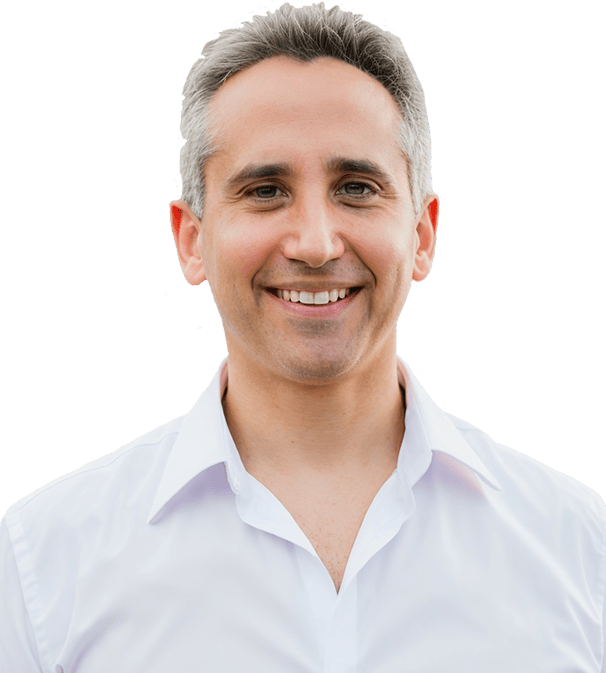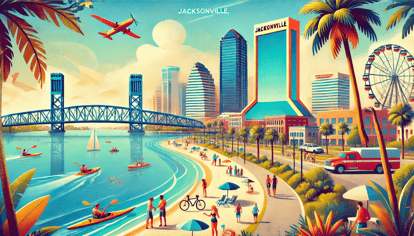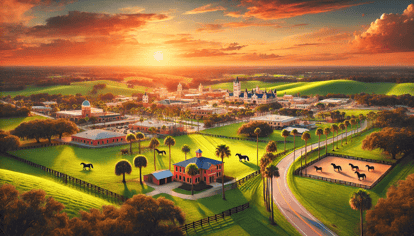20 Things to Know Before Moving to Melbourne, Florida [2025 Data]
Thinking about moving to Melbourne, Florida?
This coastal city on the Space Coast offers a mix of beachside living, job opportunities in technology and aerospace, and a laid-back Florida lifestyle.
See Which Florida Down-Payment Assistance Programs You Qualify For
Before you make the move, here are 20 key things you should know to help you decide if Melbourne is the right place for you.
In this article (Skip to...)
- Affordable Living – 4% below U.S. avg., $348K median home price, $1,442 rent (Miami: $2,350).
- Tech & Aerospace Hub – 20,000+ aerospace jobs, L3Harris (7,000 employees), 3.1% unemployment.
- Beaches & Outdoor Life – 33 miles of coastline, Sebastian Inlet (top surf spot), biodiverse Indian River Lagoon.
- Hurricane & Climate – 52 in. rain/year, hurricanes every 2-4 years, 39.9% flood risk, 91°F summers.
- Community & Schools – West Shore Jr./Sr. High (#2 in FL), 20+ festivals, Melbourne Art Festival (50,000+ visitors).
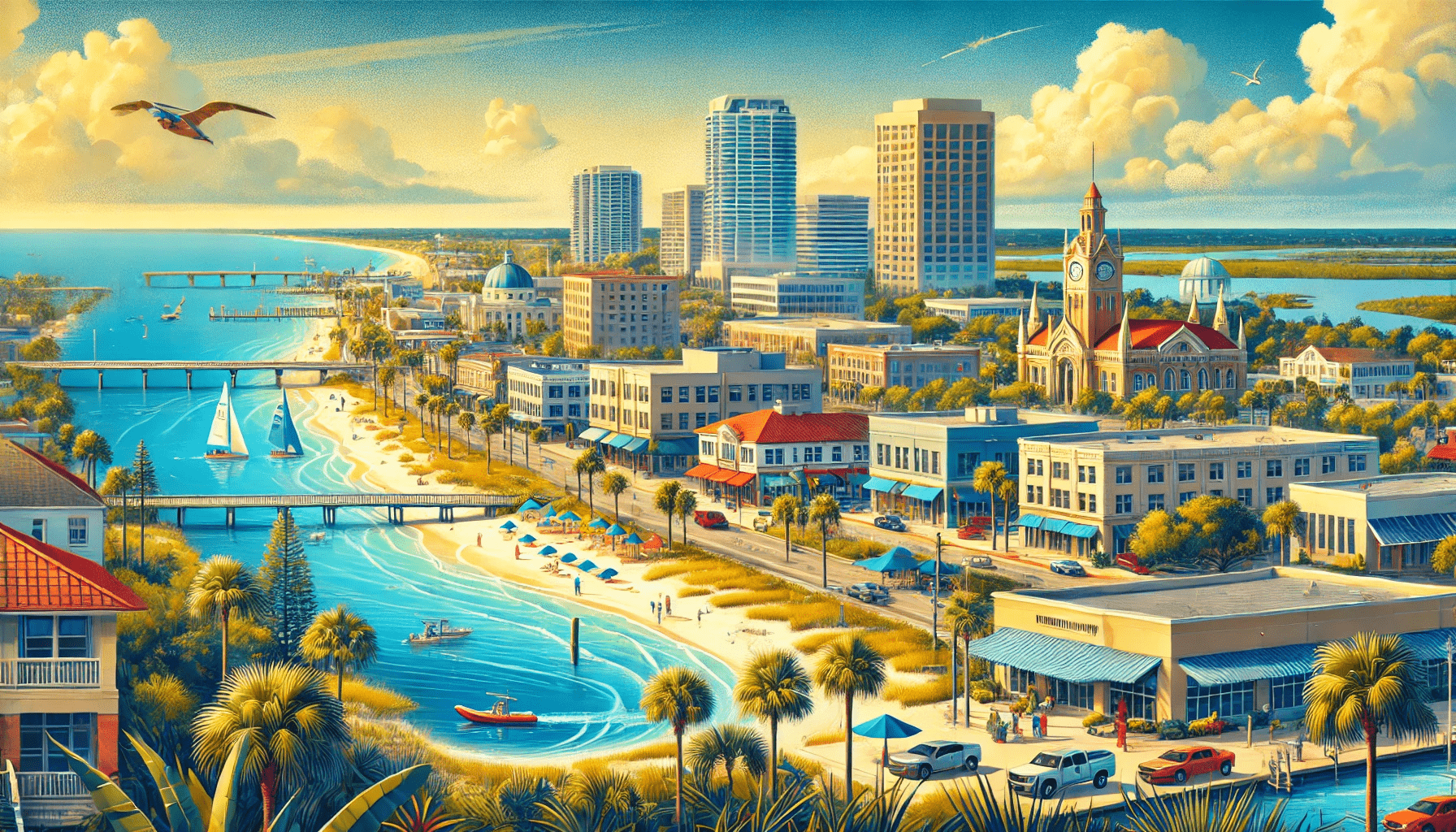
The Cost of Living Is About the Same as the U.S. Average
The cost of living in Melbourne is about the same as the U.S. average and a little lower than the Florida average. Housing is one of the biggest costs—homes sell for around $348,000, which is slightly higher than the U.S. average but lower than Florida’s.
Renting is also affordable compared to big cities. A one-bedroom apartment costs about $1,500 per month, and a three-bedroom is around $2,200. While this is a little higher than the U.S. average, it’s much cheaper than Orlando, where living costs are 10% higher, and Miami, where housing is much more expensive.
Daily costs in Melbourne are reasonable. Utilities like electricity and water cost about $200–$250 per month, depending on air conditioning use. Grocery prices are about the same as the national average, and gas is a little cheaper than in other places. A family of four needs about $5,500 per month to live comfortably, which is only 3% more than the U.S. average.
One big advantage is that Florida has no state income tax, helping people save money. Compared to larger Florida cities, Melbourne is an affordable place to live with a good quality of life.
See Which Florida Down-Payment Assistance Programs You Qualify For
Home Prices in Melbourne Are Holding Steady, but Buyers Now Have More Negotiating Power
Melbourne’s home prices have leveled off after years of growth. In early 2025, the median home price is around $318,000–$320,000, staying about the same as last year. Some reports show a higher median sale price of $410,000, meaning many homes sell close to asking.
The market has shifted to favor buyers, with homes sitting on the market longer—about 70 days on average. Buyers now have more options and can negotiate, as homes sell for about 4% below the listed price.
Affordable areas include West Melbourne and neighborhoods west of downtown, where newer homes cost less. Viera and Suntree are popular for safety and good schools, while beachside areas like Indialantic and Satellite Beach are pricier.
Melbourne Village and June Park offer lower home prices and average rents around $1,750–$1,780. Property taxes are moderate, about 0.95% of a home’s value, or $3,300 per year for a $350,000 home. With more homes available and less competition, now is a good time for buyers in Melbourne.
See Which Florida Down-Payment Assistance Programs You Qualify For
Aerospace, Healthcare, and Tech Drive Job Growth, Keeping Unemployment at 3.2%
Melbourne has many jobs in high-tech, aerospace, healthcare, and education. Since it is part of Florida’s “Space Coast,” companies like L3Harris, Northrop Grumman, Collins Aerospace, and Embraer hire many workers.
Engineering and tech jobs are common, and Patrick Space Force Base adds even more. Healthcare is also big, with Health First and Brevard Public Schools being the largest employers. Other major job providers include the county government, Florida Institute of Technology, and stores like Publix and Walmart.
About 40,000 people work in Melbourne. The biggest job areas are retail (5,100 jobs), healthcare (4,900 jobs), and professional services (4,700 jobs). Unemployment is low at 3.2%, better than the national average. Salaries depend on the job—engineers and software developers often make $80,000–$100,000+, while retail and restaurant jobs pay around $25,000–$40,000.
The average salary in Melbourne is about $55,000, and the median household income is around $52,000. With a good job market and a lower cost of living than bigger cities, Melbourne is a great place to find work and live comfortably.
See Which Florida Down-Payment Assistance Programs You Qualify For
Crime Has Dropped 23% in the Past Year, and West Melbourne, Viera, and Suntree Are Among the Safest Areas
Melbourne is a generally safe city with crime rates similar to Florida’s average and lower than the U.S. average in some areas.
The violent crime rate is about 303 incidents per 100,000 people, slightly above Florida’s average but well below the national average of 364.
Most of Melbourne’s safest neighborhoods are in the western and southern parts of the city, including Viera, Suntree, and West Melbourne, where crime rates are much lower. Beachside communities like Indialantic and Melbourne Beach are also very safe and family-friendly.
See Which Florida Down-Payment Assistance Programs You Qualify For
Summers Bring 90°F Heat and Daily Rain, While Winters Stay Mild in the 70s
Melbourne has a humid subtropical climate, meaning summers are long, hot, and humid, while winters are mild and dry. From June to September, daytime highs reach 89–92°F, with warm nights around 75°F and frequent afternoon thunderstorms.
The wet season brings about 50 inches of annual rainfall, but the ocean breeze helps with the humidity. Winters, on the other hand, are comfortable, with highs in the 70s and lows in the 50s, and freezes are very rare. Melbourne enjoys about 234 sunny days per year, making it a great place for outdoor activities most of the year.
Hurricane season lasts from June to November, with the highest risk in August and September. While direct hits are rare, Melbourne has experienced storms in the past, such as Hurricanes Frances and Jeanne in 2004 and Irma in 2017, which caused power outages and minor damage. Flooding is mainly a concern for beachside areas, as most of mainland Melbourne sits above 10 feet in elevation. Extreme heat is also common, with heat indexes often exceeding 100°F in summer.
Despite the summer heat and hurricane season, Melbourne’s beautiful weather from October through April makes it a great place to live for most of the year.
See Which Florida Down-Payment Assistance Programs You Qualify For
Melbourne Has Strong Hurricane Preparedness Plans
Living in Melbourne means being ready for hurricanes, but the city and Brevard County have strong emergency plans in place.
If a major storm is expected, officials may order evacuations, especially for beachside and low-lying areas. Residents on the barrier islands use causeways like the 192 Causeway and Eau Gallie Causeway to reach the mainland, where they can connect to I-95 or US-192.
The county provides evacuation maps, and it’s important to know your zone—Zone A (beachside) is usually the first to evacuate.
There are hurricane shelters in public schools and community centers, such as Viera High School and Melbourne Auditorium, for those who need a safe place to stay.
See Which Florida Down-Payment Assistance Programs You Qualify For
Holmes Regional Medical Center Is Brevard County’s Top Hospital
Melbourne is home to several hospitals, with Holmes Regional Medical Center standing out as the largest and most advanced facility in Brevard County. This 550-bed hospital is the county’s only Level II trauma center and is recognized for its top-rated heart institute, stroke care, and emergency services.
Orlando Health Melbourne Hospital, a 119-bed facility, offers general medical and surgical care, while Viera Hospital and Palm Bay Hospital provide additional emergency and specialty services nearby. Residents needing advanced cancer treatment often visit Health First’s Cancer Institute or travel to the M.D. Anderson Cancer Center in Orlando.
The area has a strong network of doctors, including specialists in cardiology, oncology, and orthopedics, making healthcare easily accessible. Veterans can receive care at the VA Clinic in Viera, while uninsured patients have options like Space Coast Volunteers in Medicine.
Most medical needs can be met locally, with specialists, dentists, and pediatricians located throughout the city. Holmes Regional consistently earns high marks for its quality of care, and Health First has been recognized as one of the best employers in Florida. With top hospitals, senior care options, and strong specialist networks, residents have access to high-quality healthcare without long travel times.
See Which Florida Down-Payment Assistance Programs You Qualify For
Average Commute Is Just 21 Minutes, with I-95 and U.S. 1 Providing Fast Travel Options
Getting around Melbourne is easy, with an average one-way commute of about 21 minutes—shorter than the U.S. average of 26 minutes. Most people drive, and while rush hour (7:30–9 AM and 4:30–6 PM) causes some congestion on roads like US-192, US-1, and Wickham Road, traffic still moves well. I-95 runs along the west side of the city and is the fastest way to travel north or south, while US-1 provides access to downtown and waterfront areas.
Causeways like the Melbourne Causeway and Pineda Causeway connect the mainland to the beachside, with occasional backups on weekends or when bridges open for boats. Public transportation is available but limited—Space Coast Area Transit (SCAT) runs bus routes, but service is infrequent, so most residents rely on cars.
For regional travel, Orlando is about 70 miles away, with a drive to Orlando International Airport taking around 1 hour and 15 minutes. Melbourne also has its own airport—Melbourne Orlando International Airport (MLB)—offering nonstop flights to Atlanta, Charlotte, and some seasonal European destinations.
Rideshare services like Uber and Lyft are widely available, and there’s a Greyhound bus stop for intercity travel. While traffic is usually light, population growth has led to some road expansion projects, such as widening Ellis Road for better I-95 access. Overall, Melbourne offers an easy commute, light traffic compared to larger Florida cities, and improving transportation options.
See Which Florida Down-Payment Assistance Programs You Qualify For
West Shore Junior/Senior High Is a Top 5 Florida School with a 100% Graduation Rate
Families moving to Melbourne will find strong public and private school options, with Brevard Public Schools ranking among Florida’s better-performing districts. West Shore Junior/Senior High, a highly competitive public magnet school, is ranked in the top five high schools in Florida, with a 10/10 rating and a 100% graduation rate.
Melbourne High School offers an International Baccalaureate (IB) program, while top elementary schools include Quest Elementary, Longleaf Elementary, and West Melbourne School for Science, a STEM-focused magnet school.
Private school options include Holy Trinity Episcopal Academy, Melbourne Central Catholic, and Florida Prep, catering to various academic and religious preferences. Charter schools like Pineapple Cove Classical Academy provide additional alternatives for families seeking specialized curricula.
For higher education, Melbourne is home to Florida Institute of Technology (Florida Tech), a top-tier STEM university offering engineering, science, aviation, and business programs. Eastern Florida State College provides affordable associate and bachelor’s degrees, while nearby University of Central Florida (UCF) and Embry-Riddle Aeronautical University offer additional educational opportunities.
Florida Virtual School (FLVS) allows students to take free online courses, and homeschooling is well-supported in the area. With a mix of highly rated public schools, private school choices, and strong higher education options, Melbourne provides families with excellent educational opportunities at every level.
See Which Florida Down-Payment Assistance Programs You Qualify For
Indialantic and Melbourne Beach Offer Soft Sand, Surfing, and Relaxed Vibes
Melbourne’s outdoor scene revolves around its beaches, parks, and waterways, making it a paradise for nature lovers. Indialantic Beach and Melbourne Beach are the closest options, offering soft sand, gentle surf, and a laid-back atmosphere.
Popular spots include Paradise Beach Park for families and Canova Beach Park, which has a dog-friendly section. Surfers can catch waves at Sebastian Inlet, a legendary break just 20 minutes south, or at local favorites like Spanish House and Satellite Beach.
Nature lovers can also experience sea turtle nesting season, with guided night walks available to see loggerhead turtles lay their eggs.
Beyond the beach, Wickham Park provides 400 acres of trails, a dog park, and camping, while Turkey Creek Sanctuary offers kayaking and hiking through scenic wetlands. The Brevard Zoo is a must-visit, with over 900 animals, a zipline course, and kayak tours.
Boaters and anglers can explore the Indian River Lagoon, known for dolphins, manatees, and excellent fishing. Golfers have plenty of options, including Duran Golf Club in Viera and Spessard Holland’s beachside course.
For families, Andretti Thrill Park offers go-karts and arcade games, while local parks provide playgrounds, tennis courts, and sports leagues.
See Which Florida Down-Payment Assistance Programs You Qualify For
Downtown Melbourne and The Avenue Viera Offer the Best Shopping, Dining, and Nightlife
Melbourne has a mix of big-name retailers, boutique shops, and a growing food and entertainment scene. For major shopping, Melbourne Square Mall is the largest indoor mall, featuring Macy’s, Dillard’s, JCPenney, and over 125 stores. The Avenue Viera provides an outdoor shopping and dining experience with stores like Kohl’s, Talbots, and Bath & Body Works, plus a movie theater.
For a more local vibe, Downtown Melbourne and the Eau Gallie Arts District (EGAD) have unique boutiques, antique shops, and art galleries, perfect for a stroll and a bit of treasure hunting. Farmers’ markets and specialty stores round out the mix, offering fresh produce and artisan goods.
Dining in Melbourne ranges from casual beachside spots to fine dining. Grills Riverside and Chart House serve fresh seafood with riverfront views, while Hemingway’s Tavern offers popular Cuban-inspired dishes. Meg O’Malley’s Irish Pub is a downtown staple with great food and a lively atmosphere, and Crush XI is a trendy spot for cocktails and small plates.
If you're looking for a fun night out, Downtown Melbourne is the place to be, with bars like Main Street Pub and Off the Traxx, plus live music at Lou’s Blues in Indialantic. For live performances, the Maxwell C. King Center hosts concerts and Broadway shows, while the Henegar Center and Melbourne Civic Theatre offer community theater productions.
See Which Florida Down-Payment Assistance Programs You Qualify For
The Melbourne Arts Festival, IndiaFest, and St. Patrick’s Block Party Are Among the City’s Biggest Events
Melbourne hosts a variety of festivals and cultural events throughout the year, bringing the community together for arts, music, and celebrations. The Melbourne Arts Festival in April is one of the city’s largest events, featuring artist booths, live music, and food vendors. IndiaFest in March draws thousands for a vibrant showcase of Indian culture, with dance performances, traditional music, and authentic cuisine.
St. Patrick’s Day transforms downtown into a massive multi-day celebration with Meg O’Malley’s St. Patrick’s Festival, featuring concerts, Irish food, and a parade. Fall brings Oktoberfest celebrations at Intracoastal Brewing Company and Wickham Park, while MelBOOM’s Fourth of July fireworks light up the skies over the Indian River.
Live performances are a big part of Melbourne’s entertainment scene. The Maxwell C. King Center hosts Broadway tours, concerts, and stand-up comedy, while the Henegar Center and Melbourne Civic Theatre offer community theater productions.
The Brevard Symphony Orchestra and Melbourne Municipal Band perform throughout the year, and the Eau Gallie Arts District First Friday Art Walk showcases local artists, live jazz, and food trucks each month.
Aviation and space enthusiasts can enjoy the Melbourne Air & Space Show, where the Blue Angels or Thunderbirds perform thrilling aerobatics. Farmers’ markets, history tours, and seasonal fairs keep the calendar full, giving residents plenty of ways to experience the local culture and meet new people.
See Which Florida Down-Payment Assistance Programs You Qualify For
Melbourne’s Population Nears 88,000, with a Growing Hispanic Community and Strong High-Tech Workforce
Melbourne’s population is estimated to be between 86,000 and 88,000 in 2024, with a balanced mix of families, professionals, and retirees. The median age is 42.4, slightly older than the U.S. average due to the city’s appeal among retirees, but young professionals and families are also well-represented, especially in areas west of I-95.
About 20% of residents are 65 or older, while another 20% are under 18, giving Melbourne a diverse age range. The city’s economy attracts engineers, healthcare workers, and military retirees, creating a highly skilled workforce, with around 29% of adults holding a bachelor’s degree or higher.
In terms of ethnic diversity, Melbourne is 68% White (non-Hispanic), 9.5% Black, 12.6% Hispanic or Latino, and 3.6% Asian, with a growing Hispanic population. The area has strong Black and Vietnamese communities, as well as a growing presence of Indian, Filipino, and Latin American cultures reflected in local businesses and restaurants.
The median household income is around $60,000, with wealthier areas like Viera and Suntree having higher incomes, while some central neighborhoods face economic challenges. With a mix of cultural influences, a strong high-tech workforce, and an engaged local community, Melbourne continues to grow while maintaining its small-city charm.
See Which Florida Down-Payment Assistance Programs You Qualify For
Beach Erosion, Lagoon Cleanup, and Wildlife Conservation Are Key Environmental Priorities
Melbourne’s coastal location brings both natural beauty and environmental challenges, with efforts in place to protect its beaches, waterways, and wildlife. Beach erosion is a constant issue, especially after storms like Hurricanes Matthew and Irma, prompting Brevard County to run regular sand renourishment projects.
Dune preservation is also a priority, with strict rules to prevent damage and promote healthy vegetation. Sea level rise projections estimate a one-foot increase by mid-century, which could lead to more frequent flooding in low-lying areas near the Indian River Lagoon.
The Indian River Lagoon, one of the most biodiverse estuaries in North America, has faced pollution problems, including algae blooms and fish kills. To combat this, local efforts include septic-to-sewer conversions, oyster reef restoration, and summer fertilizer bans to reduce runoff.
Wildlife conservation is another major focus—beachfront properties must use turtle-friendly lighting from May to October to protect nesting sea turtles, while boaters must follow slow-speed zones to prevent manatee collisions. Melbourne also has strong community-driven environmental initiatives, from Keep Brevard Beautiful’s cleanup events to Florida Power & Light’s expanding solar farms.
See Which Florida Down-Payment Assistance Programs You Qualify For
Electricity Bills Average $130, While High-Speed Internet and Reliable City Services Keep Costs Manageable
Setting up utilities in Melbourne is straightforward, with well-established providers for electricity, water, internet, and trash collection. Florida Power & Light (FPL) supplies electricity, with rates around 11¢ per kWh—lower than the national average—resulting in typical monthly bills of about $130, though summer air conditioning can push costs higher.
Water and sewer services come from the City of Melbourne, with a combined monthly cost of around $80–$100 for most households. Trash and recycling pickup is included in city services, costing about $200–$250 per year, with twice-weekly garbage collection and single-stream recycling.
Internet is widely available through Spectrum (cable) and AT&T (fiber in select areas), with speeds ranging from 100 Mbps to 1 Gbps and monthly costs averaging $60–$80. All major cell carriers offer strong coverage, including 5G in most of the city.
Natural gas is less common but available in some neighborhoods through Florida City Gas. Emergency services, including police, fire, and EMS, are provided by the city and county, with quick response times.
See Which Florida Down-Payment Assistance Programs You Qualify For
Orlando Is Just Over an Hour Away, While Miami and Tampa Are Within a Three-Hour Drive
Melbourne’s central location on Florida’s east coast makes it easy to reach major cities for day trips or weekend getaways. Orlando is the closest, about 70 miles away, with a drive time of 1 hour and 15 minutes to downtown or 1.5 hours to the theme parks.
This puts attractions like Walt Disney World, Universal Studios, and SeaWorld within easy reach, along with major concerts, NBA games, and the larger Orlando International Airport.
Daytona Beach, known for NASCAR and Bike Week, is 1.5 hours north, while Tampa is about a 2-hour, 45-minute drive west, offering pro sports, Busch Gardens, and Gulf Coast beaches.
Heading south, Miami is roughly 2.5 to 3 hours away via I-95, making it an easy weekend trip for nightlife, beaches, or cultural events. Fort Lauderdale is slightly closer, with a drive time of around 2.5 hours. Jacksonville is about 2.5 hours north, providing another big-city option.
While driving is the primary mode of travel, the new Brightline high-speed train connects Orlando to Miami, offering a potential alternative for South Florida trips. With Port Canaveral just an hour away for cruise departures and Kennedy Space Center within a 45-minute drive, Melbourne’s location balances small-city living with access to Florida’s biggest attractions.
See Which Florida Down-Payment Assistance Programs You Qualify For
Melbourne Public Library and Eau Gallie Library Offer Free Learning Resources and Community Events
Melbourne is home to several well-loved public libraries and community centers that provide valuable resources for residents of all ages. The Melbourne Public Library on Fee Avenue is the largest branch, offering books, DVDs, free Wi-Fi, study rooms, and creative loan programs for items like ukuleles and telescopes.
The Eau Gallie Public Library, located along the river, specializes in art and history collections and hosts author talks and knitting clubs. Both libraries provide access to online learning platforms, e-books, job search workshops, and educational programs, making them excellent resources for lifelong learning.
Beyond libraries, Melbourne has multiple community centers offering activities and support services. Wickham Park Community Center hosts yoga classes, painting workshops, and senior programs, while the Palmdale and Grant Street Community Centers provide after-school tutoring and job training.
CareerSource Brevard in Rockledge helps job seekers with resume workshops and training grants, while the UF/IFAS Extension Office in Cocoa offers classes on gardening, nutrition, and Florida-specific topics. For those looking to continue their education, Eastern Florida State College and Florida Tech offer public lectures and occasional library access.
See Which Florida Down-Payment Assistance Programs You Qualify For
Daily Bread, Habitat for Humanity, and Keep Brevard Beautiful Offer Popular Volunteer Opportunities
Melbourne offers countless ways to connect with the community through volunteering, civic engagement, and social organizations. For hands-on service, Daily Bread serves hot meals to those in need and welcomes volunteers, while Habitat for Humanity of Brevard provides opportunities to build and repair homes.
Animal lovers can help at the Brevard Humane Society or Florida Wildlife Hospital, and the Brevard Zoo offers volunteer programs for teens and adults. Environmentalists can join Keep Brevard Beautiful for beach cleanups and tree planting, or adopt a road to keep the city litter-free.
For civic engagement, residents can apply for city advisory boards on parks, planning, and zoning or get involved in neighborhood associations. The Melbourne Regional Chamber runs leadership programs, and Young Professionals of Brevard offers networking and volunteer opportunities for those under 40.
Service organizations like Rotary, Kiwanis, and Lions Club are always welcoming new members who want to support local projects. Newcomers can meet people through the Space Coast Newcomers Club, which hosts luncheons, group outings, and hobby-based meetups. Whether you’re interested in mentoring youth, supporting the arts, or helping with hurricane preparedness, Melbourne has a place for you to make a difference.
See Which Florida Down-Payment Assistance Programs You Qualify For
No State Income Tax, 7% Sales Tax, and Strict Watering and Lighting Regulations
Melbourne, like the rest of Florida, has no state income tax, making it a tax-friendly place to live. The local sales tax rate is 7%, including a 1% Brevard County surtax for infrastructure projects.
Property taxes average around 0.95% of a home’s value, with homeowners eligible for the Homestead Exemption, which reduces taxable home value by up to $50,000 and limits annual increases to 3% under the Save Our Homes law. Renters should be aware that leases under six months are classified as short-term rentals and are subject to an additional 5% tourist development tax.
Local regulations include zoning laws that prohibit livestock in most residential areas and restrictions on short-term rentals in some neighborhoods.
Beachside properties must comply with sea turtle lighting ordinances from May to October, requiring low-intensity, shielded lights to prevent disorienting hatchlings. Watering restrictions allow lawn irrigation only twice a week on designated days, and grass must be kept below a certain height to avoid code enforcement fines.
See Which Florida Down-Payment Assistance Programs You Qualify For
Ready to Make Melbourne, FL Your Home?
If you’re planning to buy a home in Melbourne, you may qualify for down payment assistance and special loan programs that make homeownership more affordable.
Florida offers a variety of first-time homebuyer programs, including grants and low-interest loans that can help cover your down payment and closing costs. Many of these programs are available to buyers in Melbourne and throughout Brevard County, making it easier to secure a home in this growing coastal city.
Whether you're a first-time homebuyer or looking for the best mortgage options, understanding FHA, VA, USDA, and conventional loan programs can help you make the best financial decision.
With the right guidance, you can take advantage of low-interest rates, flexible credit requirements, and state-backed assistance programs designed to help Florida residents achieve homeownership.
Ready to take the next step?
Explore your options and get expert help in finding the best home loan for your needs.
See Which Florida Down-Payment Assistance Programs You Qualify For
With over 50 years of mortgage industry experience, we are here to help you achieve the American dream of owning a home. We strive to provide the best education before, during, and after you buy a home. Our advice is based on experience with Phil Ganz and Team closing over One billion dollars and helping countless families.
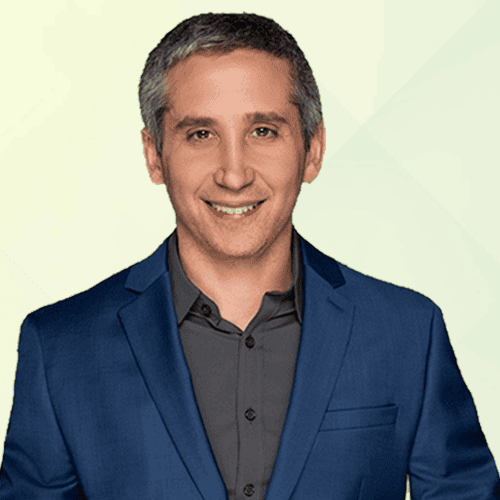
About Author - Phil Ganz
Phil Ganz has over 20+ years of experience in the residential financing space. With over a billion dollars of funded loans, Phil helps homebuyers configure the perfect mortgage plan. Whether it's your first home, a complex multiple-property purchase, or anything in between, Phil has the experience to help you achieve your goals.


 By
By  Edited by
Edited by 

